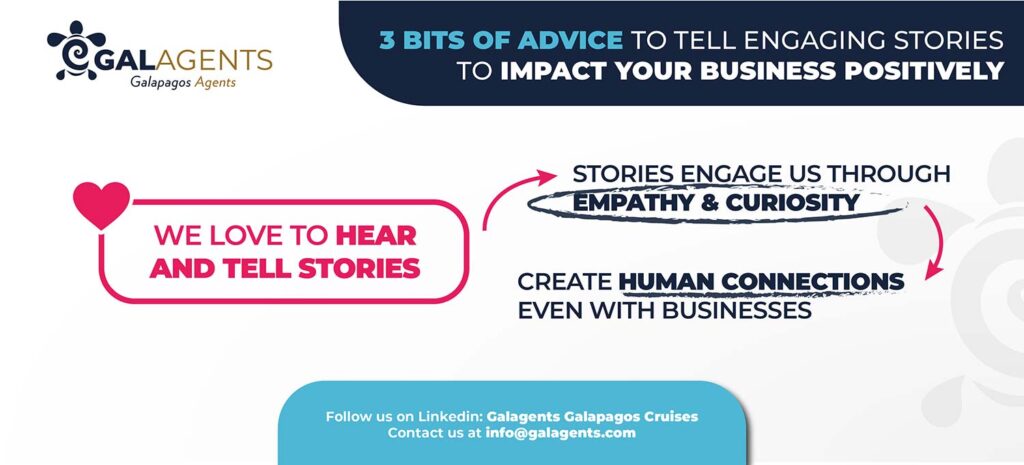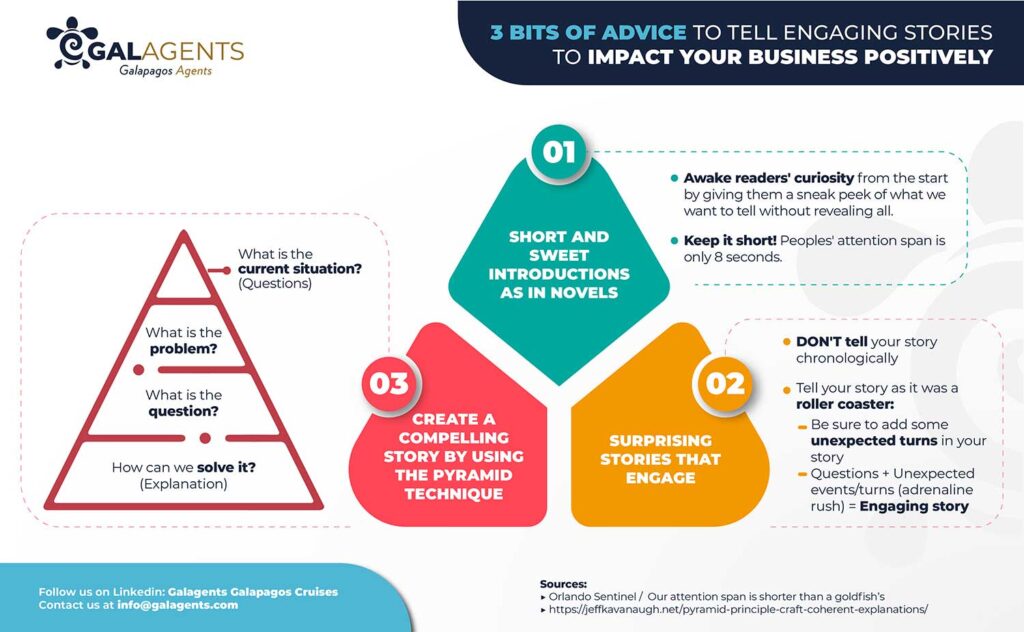“Today, I wanna tell you three stories from my life. That’s it. No big deal, just three stories.”
That was Steve Jobs’s heartfelt speech at Stanford University in 2005. And that was the beginning of three pieces of advice he wanted to plant the seed on college graduates. But for doing so, he told his personal story instead of his entrepreneurial achievements and failures. If you haven’t watched his wholehearted speech, this is your time by clicking here.
What he cleverly did was storytelling, but:
What’s storytelling, and why is it so essential for businesses?

We live in an era of over-information, where messages last microseconds unless people connect with them, in which case it may become viral even though very few businesses can communicate with their audiences effectively. Why? Because we’re used to sharing data and impersonal messages.
We love to hear and tell stories, but we only connect with the good ones. We remember stories, no data. That’s because stories have two superglues that engage us: empathy and curiosity. Then, we connect humanly even with businesses.
Yet, for doing storytelling, businesses need to commit to understanding their audiences, listening to them, and delivering their messages through meaningful stories. How? You can follow these 3 bits of advice to tell engaging stories to impact your business positively.
1- Short and sweet introductions as in novels
Do you remember those massive books with hundreds of pages that were so hard to read? You certainly do, and what makes them so hard to digest is their slow pace of the story that takes ages to find what is going on. However, novelists started to adjust to this type of introduction:
“It was now lunch time and they were all sitting under the double green fly of the dining tent pretending that nothing had happened.”
This was the opening that Ernest Hemingway wrote in The Short Happy Life of Francis Macomber.
The reason behind this introduction is to awaken the curiosity of readers, which is one of the superglues that engage us in good stories. Don’t you want to know what happened to them? Hence, we should treat our business stories like a novel by giving a sneak peek of what we want to tell from the start without revealing everything.
However, we need to keep it short because “our attention span is shorter than a goldfish’s,” according to the Orlando Sentinel article, which states that humans nowadays have 8 seconds of attention span compared to the 9-seconds goldfish have.
2- Surprising stories that engage
Do you start your stories from the beginning by following a chronology of events? If so, don’t worry! We all do that almost by instinct. That’s because it’s easy for our minds to organize everything from the beginning until the end to avoid missing things in the story.
However, as we mentioned, we need to awaken our audience’s curiosity because it lets us segregate dopamine by keeping our attention until the end of the story. By doing so, TV series and movies have a technique.
Imagine you are on a roller-coaster in which the car starts to move slowly, until after a few seconds, there is an unexpected move that infuses your blood with adrenaline, which excites you and keeps you alert. The whole journey has slow paths, fast movements, surprising turns that take you upside down, and so on.
That’s precisely what movies and screenwriters do to keep their audiences’ engagement, and that’s what you can do with your business communication. Give a sneak peek of the answer your audience is looking for, then drive them through a compelling story that helps them connect with you, followed by an unexpected turn that changes the expected final.
Can you do it in a business? Yes, you can!

Does it always have to serious? No, it doesn’t. That’s the case of the Ikea can improve your private life campaign in Singapore with a hilarious ad that showcased the shelves solutions that Ikea offers to people’s private areas at home.
Think about the facts you would like to share, then the effects or benefits that they may have on your audience, and then try to pair them with rare solutions. It may take time, but it’ll be worth it in the end.
3- Create a compelling story by using the pyramid technique
As we start our stories chronologically, we also tend to move from the general to the specific facts. Remember, that’s how our minds work because it thinks we can control the overall scenery. Yet, it is not the most effective way to tell a story because it makes it dull. It takes too long to get to the point.
About 40 years ago, Barbara Minto, one of the first McKinsey partners, found out that junior consultants’ presentations were boring and didn’t catch their audience’s attention or effectively communicate the solutions to the problems. Thus, she developed a method that helped them to create engaging presentations that she called the pyramid technique, which we can also use to build our storytelling by following this structure:
- What is the current situation?
- What is the problem?
- What is the question?
- How can we solve it?
If we use this consulting method, we will create catchy presentations by generating many questions that later we will explain, giving the audience the peace of mind they need at the end of the story.
Do you want to dig into this consulting technique that you can adapt to your business communication strategy?
Check this video that explains it beautifully.
Our final piece of advice is to practice and improve constantly. Storytelling is an art that takes time to master and finally adjust to our business voice that, in the end, will build a bond with our audience that can be converted into sales.

